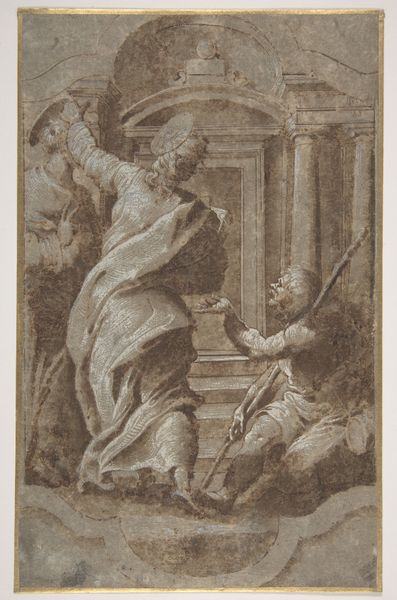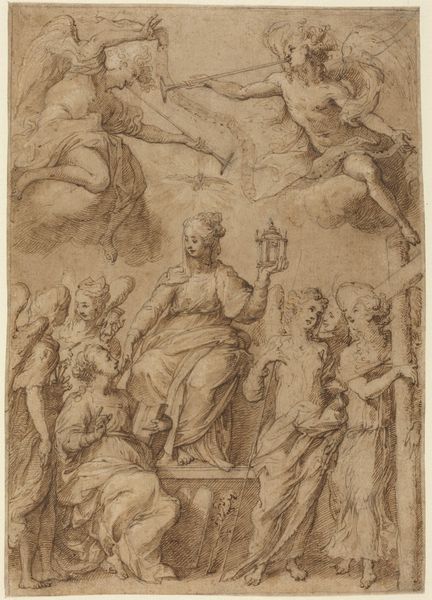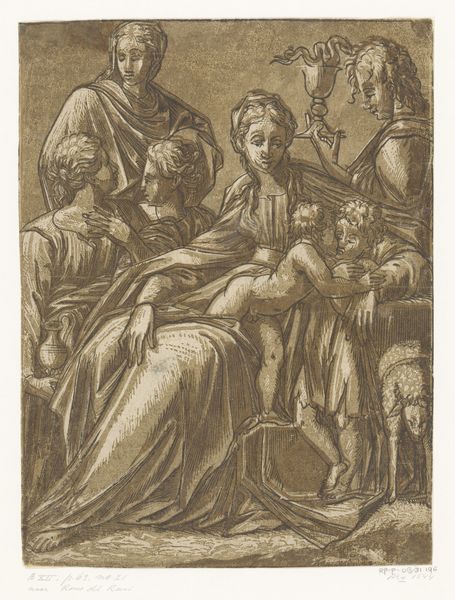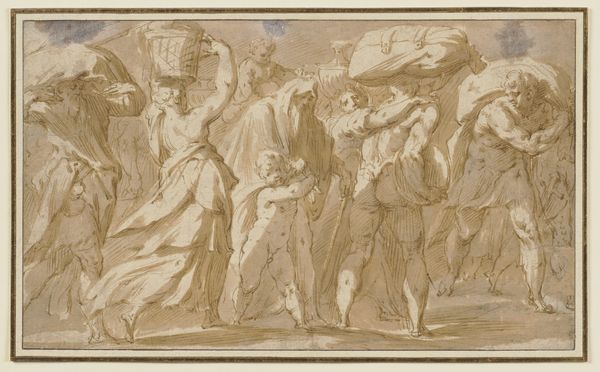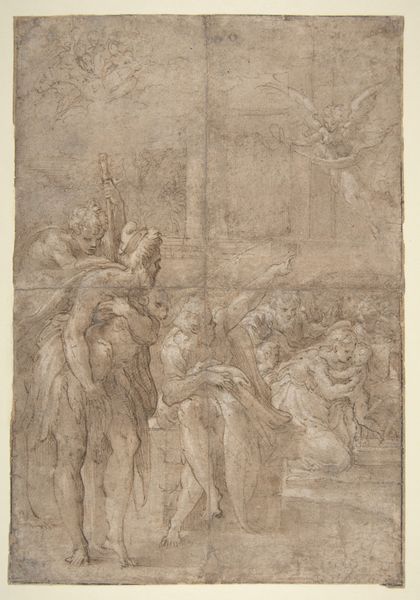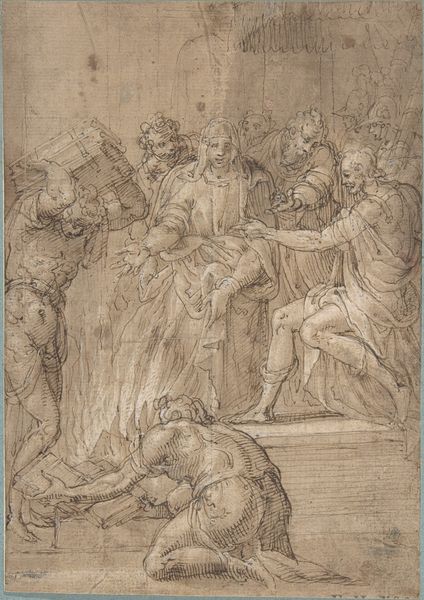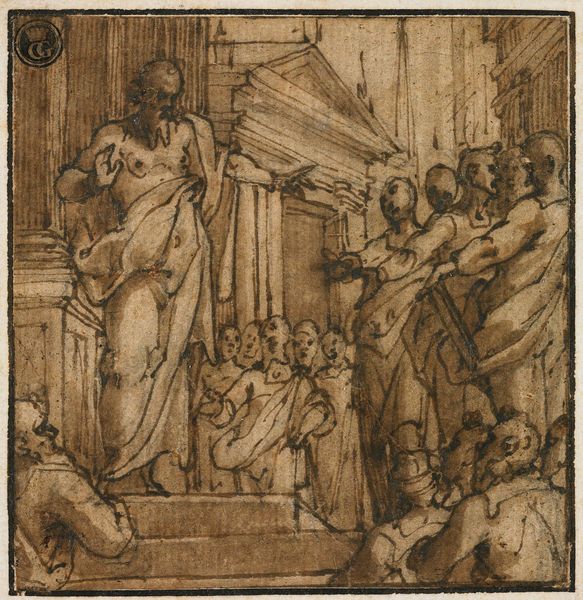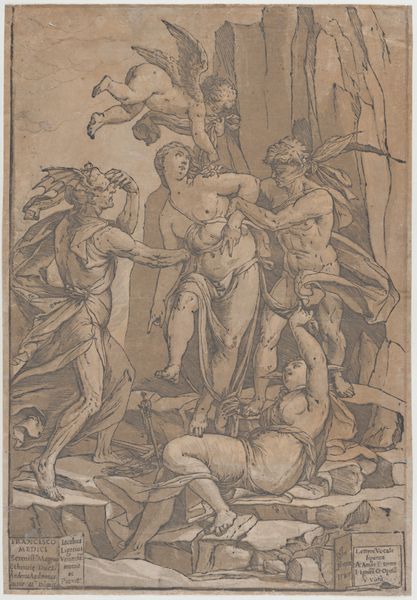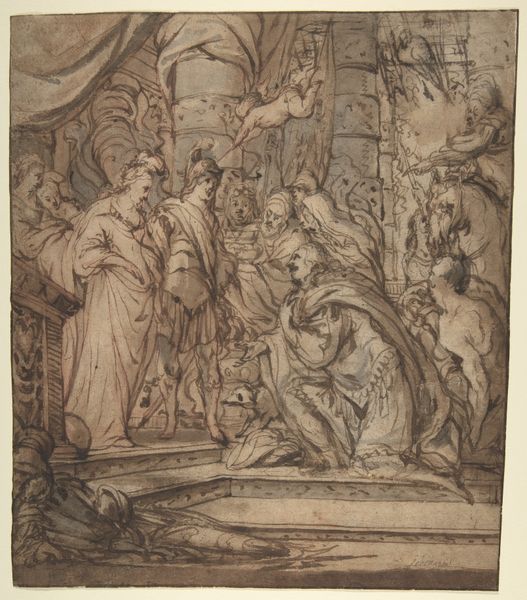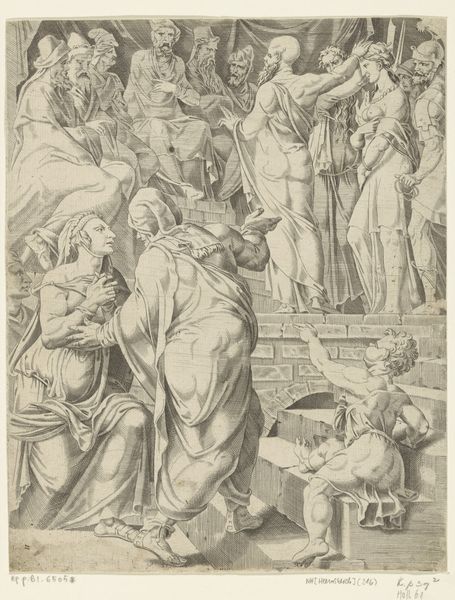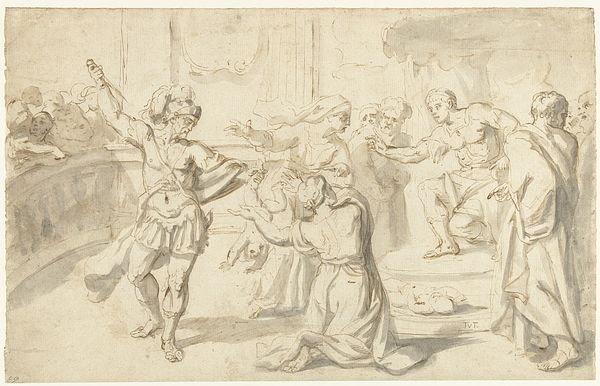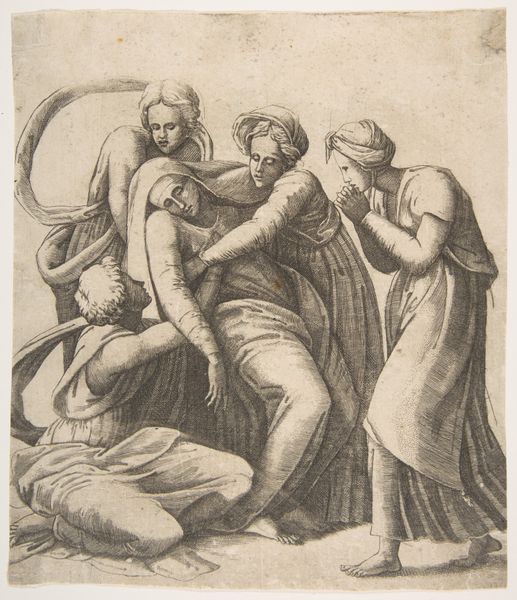
drawing, charcoal
#
drawing
#
charcoal drawing
#
mannerism
#
figuration
#
charcoal
#
history-painting
#
charcoal
Dimensions: overall (approximate): 25.2 x 12.9 cm (9 15/16 x 5 1/16 in.)
Copyright: National Gallery of Art: CC0 1.0
Editor: So this is "The Martyrdom of Saint Apollonia," a charcoal drawing by Jacopo Zucchi. It's pretty intense—the central figure's face seems to be undergoing torture. There are so many other figures surrounding her, weapons…what exactly is happening here? What does this artwork tell us, culturally? Curator: Well, martyrdom scenes like these, especially during the Mannerist period, served a very specific function. The politics of imagery surrounding religious persecution were intense. The Catholic Church during the Counter-Reformation aimed to solidify faith but also demonstrate power, what better way than showing unflinching resolve in the face of pain? How do you see that playing out here? Editor: The stoicism is really there, definitely! She isn’t fighting back, so you almost miss it initially… but there’s defiance there. Almost as though her pain is the instrument for conveying their propaganda? But it’s really brutal—how would a drawing such as this be seen outside of just institutional church uses? Curator: Interesting point. A drawing like this, although often studies or preparatory works for larger commissions, would be seen by fellow artists in the academy. There was a kind of aestheticizing cruelty prevalent. Didactic and devotional, but consider also the sheer performance of faith and power. Look at how Zucchi manipulates the medium of charcoal to create light and shadow, amplifying drama, think about how the scene would then be adapted by other artists... what lasting impact do you think depictions like these can leave? Editor: So, it becomes both a tool of faith, but also a reference or "how-to" for future creations. Seeing how these drawings are used institutionally, and then spread throughout the artist community, you start to see that intermingling of art, power, and cultural message and how lasting its impression became! Curator: Precisely. Reflecting on "The Martyrdom of Saint Apollonia", we see the profound intersections of art, belief, and political agendas in shaping public perception. Editor: Thanks! This conversation made me see past the initial shock of the violence and recognize the role it played in both art history and larger historical narratives.
Comments
No comments
Be the first to comment and join the conversation on the ultimate creative platform.
